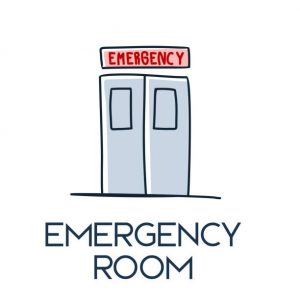We would like to extend a warm welcome to one of our newest Nonprofit Partners, Stephen Wright, Vice President, Domestic Partnerships and Crisis Programs for Flanders Fields. Flanders Fields’ mission is to ensure that each and every Military Veteran has a helping hand when they need one.
We sat down to learn more about Stephen, the organization, and how the NRH community can help support the great work they do.
NRH: Stephen, we are thrilled to welcome you to the Nonprofit Resource Hub and our growing community of your fellow Nonprofit Partners and Associate Members. We all want to get to know about you and your organization, so can you start off by telling us a little bit more about Flanders Fields and the mission?
SW: Flanders Fields was awarded its 501(c)(3) nonprofit status on August 15th, 2021, the day Afghanistan was overtaken by the Taliban. The timing of this was significant to this new organization.
We are a group of U.S. Veterans and supporters on a mission to help other Veterans in any way possible. As Veterans ourselves, we understand the true problems and situations our troops deal with when coming home. Veterans are often faced with great challenges after service, including PTSD, TBI (Traumatic Brain Injury), homelessness, and addiction.
Our team of Veteran Advocates and Peer-to-Peer Support Specialists leverage our resources and connections to assist servicemembers and Veterans in multiple areas.
Advocates coach individuals on the job search process, assist them in locating housing, and assist them in completing college applications or acquiring transcripts. We also work with other companies that provide job placement services, resume reviews, financial literacy training, and other forms of aid.
Flanders also assists our clients by working with the Veterans Administration to expedite their GI Bill benefits, pursue disability claims when applicable, and even negotiate with bill collectors to postpone payments.
Our Peer-to-Peer Support Specialists are highly involved in suicide prevention and mental illness advocacy, outreach, and awareness, providing peer-to-peer support for those we can, and referring those in need of more professional help to our partnered licensed therapists or psychologists, at no cost to the Veteran.
These services are essential to provide for those servicemembers and Veterans who do not meet the criteria for other support programs.
NRH: Now, can you tell us about yourself. How and why did you choose this organization to work with?
SW: I enlisted in the Army National Guard in 2007 and I continue to serve with over 14 years of Active Duty and reserve service. I’m an OEF Combat Veteran (Afghanistan 2013), and I have served in several roles such as Information Operations (I.O.), marketing, and Public Affairs.
I graduated from the Arkansas Law Enforcement Training Academy in 2014, where I became a certified law enforcement officer, specializing in narcotic interdiction and investigations. I worked at the National Guard’s Marksmanship Training Center, serving both as a Public Affairs Officer and an international shooting competitor. I also attended UA Little Rock in Central Arkansas where I studied Applied Communications and Political Science.
I now serve as the Jr. Vice Commander of a local Arkansas-based VFW Post, a member of Rotary International, and also as the Vice President of Domestic Partnerships and Crisis Programs for Flanders Fields.
Volunteering with Flanders Fields was an easy decision. After spending weeks working on the disastrous evacuation from Afghanistan, the founder of Flanders, Ben Owen, asked me if I’d be willing to join the team. It was a rather easy decision to make, as Flanders had an identical philosophy to mine when it came to helping our fellow Veterans.
I’ve lost many friends from military service to suicide. Serving as a law enforcement officer, I saw many unintentional suicides due to overdoses, specifically opiate overdoses.
I’m tired of losing friends. I’m tired of the senseless deaths. I’m sick of seeing addiction overtake the nation and I take our mission personally. Every aspect of Flanders Fields is near and dear to my heart. We’re there when others aren’t and we fight for those who need it. Sometimes it’s just an ear that people need, sometimes it’s a bed or even a treatment facility to overcome addiction.
I work with a phenomenal group of colleagues at Flanders, such as Ben Owen, the president, Robert Coleman, our COO, and Tyler Ledford, our CFO. They have all made a significant impact in my life in the time that I’ve known them. That’s how I know the Flanders mission is worthwhile. I’d like to add, as I feel obligated to, that every penny coming into Flanders, goes right back out to our support services. Nobody on the board, no executive, and no volunteer collect a dime from our incoming donations. We put 100% of everything we receive into the programs our Veterans desperately need.
NRH: Tell us what your goals are for your organization this coming year?
SW: We have a lot of goals for 2022 but the most important, in my opinion, would be the expansion of our list of resource partners that have a common goal of assisting Veterans in need and increasing the number of volunteers we have available to assist us in our day-to-day operations.
NRH: Tell us about one success story you are really proud of.
SW: One of our success stories that I’m really proud of, involves a Veteran that was trying to keep his family together. He was living in temporary housing, separate from his wife and children at the time but he wanted to work on his marriage. They went to counseling together and decided to get their own place and move back in together.
They had both just acquired new jobs but simply didn’t have the finances on hand to pay for all of the required utility deposits. I and our CFO, Tyler Ledford, worked for two days straight simply trying to make contact with the utility companies and see what we could do to assist. Tyler was finally able to get a representative that allowed us to provide the required amount for the Veteran’s utility, allowing him to move into the residence the very next day.
That is simply one of the numerous examples of how we’ve helped get people on their feet, giving them a hand up when they’re down and ensuring they have the means and resources to become financially independent and thrive self-sufficiently.
NRH: What do you find to be the biggest challenge to working in the nonprofit industry (or with your organization in particular) since the start of the pandemic?
SW: I believe we, America, have been fighting a pandemic, before “the pandemic”. Opioid addiction and suicide rates have skyrocketed, even so with the pandemic. The war we wage on the pandemic before the pandemic has relied on an increase in efforts, but addiction and suicide are difficult areas to address already. The fall of Afghanistan and COVID are just adding layers of issues to the overarching problem we fight daily.
NRH: Aside from increasing awareness and donations, what is one area of your business you would love assistance with?
SW: Any Veteran that has struggled with addiction, will rarely choose any other means of ending their own life. Suicide is suicide and it doesn’t matter if it was from squeezing a trigger or ingesting a lethal amount of a toxic substance.
From what we can best gather, the number of Veteran suicides is actually double what is being reported. Reporting suicide all depends on state law, ME or Coroner knowledge, reporting requirements, etc… Suicide, be it intentional or unintentional (drug overdose), has gotten out of control.
We have an extremely valued partnership with American Defense News where they assist us in highlighting the issue of veteran suicides and removing the stigma surrounding veteran addiction.
We are helping many Veterans fight “The War, After The War” and we would greatly appreciate any available assistance.
NRH: What program initiatives do you have scheduled for this coming year and how can the NRH community get involved to support you?
SW: One of our program initiatives for 2022 is the acquisition of properties and the establishment of, for a lack of better terms, halfway houses for Veterans. A place where they can have proper shelter, reintegrate after addiction treatment facility release, and prepare themselves for self-sustainability by utilizing our other programs that help them with their resumes, workforce development, and job placement.
We would love any type of support available for this initiative to include, but not limited to, additional virtual peers, licensed mental health providers, employers or placement organizations, and, of course, donors.
NRH: What are you most looking forward to as a new Nonprofit Partner with the NRH?
SW: We are here to help and network. If somebody sees that we offer a service that their nonprofit could utilize, we look forward to them utilizing us. We are Veterans supporting Veterans and we are proud to be of service.
NRH: Is there anyone you would like to connect with that, perhaps, we could help make an introduction for you?
SW: Gary Sinise, of the Gary Sinise Foundation.
NRH: We encourage all of our Members and Partners to work on building our community and relationships within. How can we get in touch with you? What is your preferred method of communication?
SW: Phone: 501-503-9910
Email: stephen.wright@flandersfields.org
Website: https://flandersfields.org/
Flanders’ LinkedIn: https://www.linkedin.com/company/flandersfields Stephen’s LinkedIn: https://www.linkedin.com/in/stephenwright2269/










